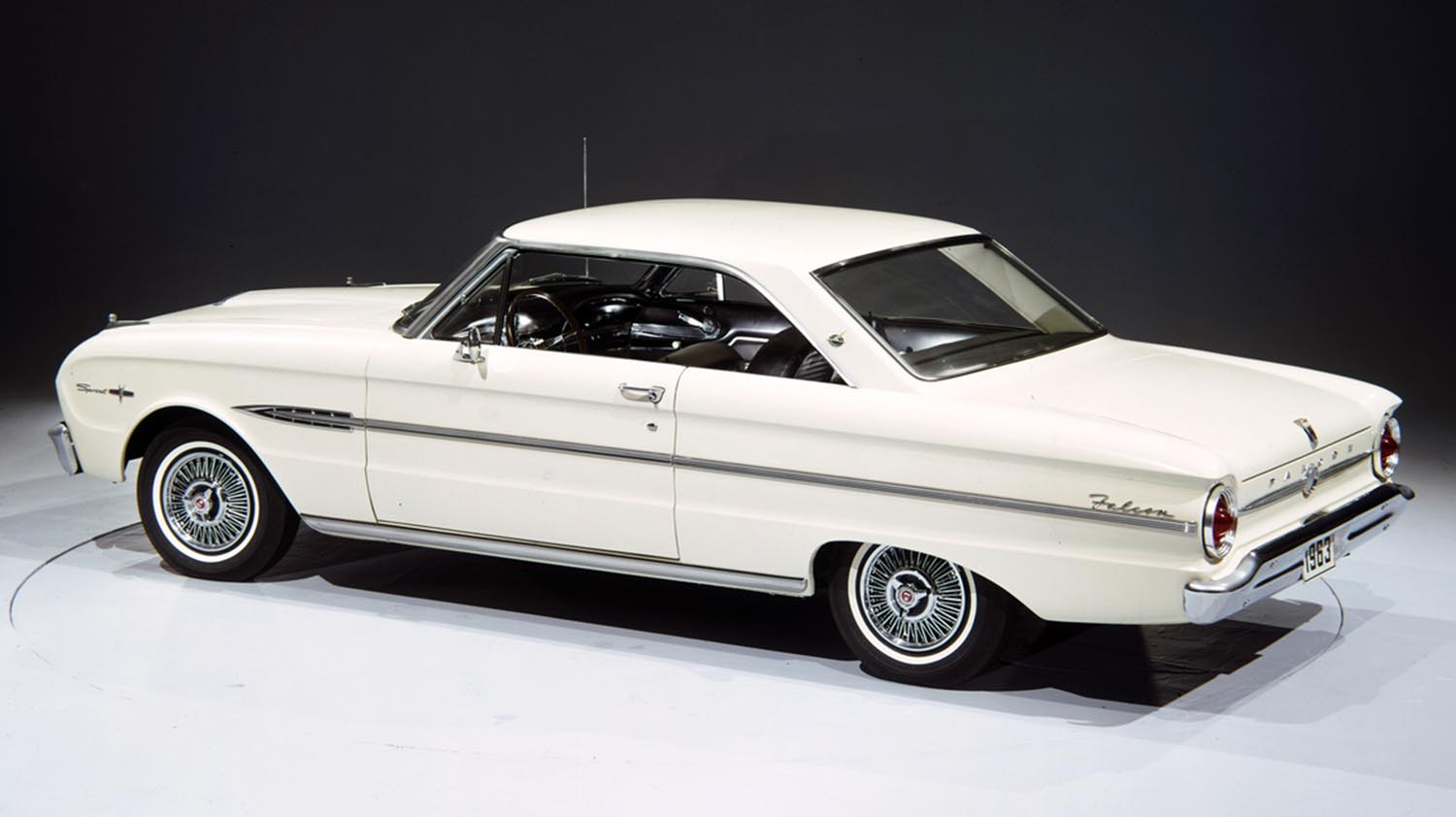
The 1963 Ford Falcon Sprint Hardtop stands as one of Ford’s most significant transitions, from practical compact to sporty performance car. As a bridge between economy models and the birth of the Mustang, the Sprint helped redefine what a small American car could be.
Origins of the Ford Falcon
When the Falcon debuted in 1960, it was designed as an affordable, efficient compact for a changing market. Buyers wanted practicality, not power. However, by the early 1960s, the American appetite for performance was growing, and Ford needed a response.
The Falcon became that response. By 1963, Ford introduced the Sprint package, turning the humble Falcon into something truly exciting. It was compact, powerful, and stylish, unlike anything else in its class.
The Sprint Hardtop Takes Flight
The 1963 Falcon Sprint Hardtop arrived with distinct visual and mechanical upgrades. It featured a bold grille, unique badging, bucket seats, and a center console that gave it a sporty personality. The hardtop design, free of a B-pillar, gave the car a sleek, coupe-like silhouette that appealed to younger buyers.
Inside, the cabin was focused and driver-oriented. Chrome accents, round gauges, and bucket seating offered a sporty contrast to the more basic Falcon trims, while the optional tachometer added a subtle hint of performance intent.
Performance and Power
What truly set the 1963 Ford Falcon Sprint apart was its engine. Beneath the hood sat Ford’s new 260 cubic-inch V8, delivering around 164 horsepower. Paired with a four-speed manual transmission, it transformed the Falcon’s driving experience.
Power steering and front disc brakes were optional, offering improved handling and control. The lightweight design, combined with V8 torque, gave the Sprint sharp acceleration and agility uncommon for a compact of its time.
Heritage and Influence
The 1963 Sprint wasn’t just a sporty Falcon, it was the direct ancestor of the Ford Mustang. Many of the Mustang’s mechanical components, including its chassis and suspension layout, came from the Falcon platform. In fact, the Sprint’s success gave Ford the confidence to develop a new, youth-oriented performance car.
This connection places the 1963 Falcon Sprint Hardtop among Ford’s most influential models. It bridged two automotive worlds, practical family cars and the emerging muscle era, making it a key piece of American automotive history.
Design and Cultural Impact
Visually, the Falcon Sprint captured early 1960s style perfectly. Its clean lines, chrome trim, and compact proportions reflected a shift toward modern design. It was a car for young professionals and enthusiasts alike, accessible yet aspirational.
Culturally, the Sprint represented independence and ambition. It proved that compact cars could be exciting, paving the way for a new generation of performance vehicles.
Summary
The 1963 Ford Falcon Sprint Hardtop remains a vital chapter in Ford’s performance heritage. It marked the brand’s move from modest practicality to spirited power and style. Compact yet confident, the Sprint captured the spirit of its era, and set the stage for the Mustang that would soon follow.
Disclaimer: Content on this site is for informational purposes only. Vehicle specs, pricing, and availability may change. Always verify details with official sources before making decisions. Opinions are those of the authors.
Source: Ford Heritage Vault
